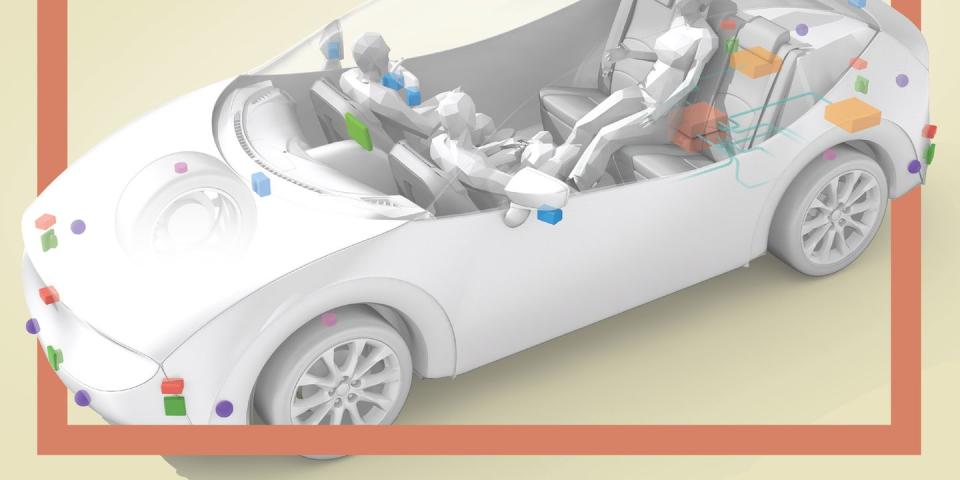This Is the Tech Fully Autonomous (Level 5) Cars Will Need To Have

A Level 5 vehicle—a steering-wheel-less car in which the passenger is never a driver—needn’t look like a koala-faced kid’s toy with a chicken bucket fixed atop its roof. Supplier Continental, a key player in the technology involved in automated driving, imagines its compact and flush-mounted sensors can be adapted to fit the familiar shapes and styles of current cars. Can full automation be achieved with fewer sensors, such as Tesla’s proposal to rely on a handful of cameras? “That’s a tricky question,” says Ibro Muharemovic, Continental’s head of advanced engineering. Yes, one system could accomplish the task. For safety purposes, however, he says redundancy is key. Every system must have a fail-safe backup. Here’s a look at the equipment Continental envisions enabling the highest level of automated driving:

High-resolution lidar (light detection and ranging) sensors will map surrounding objects up to three football fields away with five-nanosecond bursts of laser that bounce back to the sensors, even through inclement weather or the dark of night. The compact sensors, which capture images of the environment in 30 milliseconds, have no moving parts, making them more durable and easier to discreetly integrate into a vehicle.

Eight quarter-sized proximity sensors measure the distance between the vehicle and surrounding objects in low-speed situations and also provide cross-traffic information.

Already widely used for adaptive cruise control, radar sensors will be updated, changing from square to a more curved shape when applied to a car’s corners, providing a wider field of view. Front radar units can look up to 900 feet ahead while rear sensors can see as far as 1800 feet to identify fast-approaching traffic.

Cross-referencing the information coming from the car’s cameras and radar and lidar sensors with a high-definition map stored onboard will place the car in its environment with a huge degree of accuracy. Mapping companies, such as Here and TomTom, are capable of pinpointing objects down to the centimeter.

Cameras—particularly depth-perceiving stereo cameras—mimic the human eye to monitor changing conditions, though they never blink or get distracted by a squirrel. That said, their daylight range is limited to roughly 300 feet compared with a human’s 3000-foot visual acuity, so that will have to improve. Cameras also can provide a 360-degree surround view for parking.

In case of a primary system failure, an emergency electronically controlled actuator will apply pressure to the hydraulic system to slow the vehicle.

Continental’s electronic tire-monitoring system, eTIS, mounts a sensor inside the tire rather than on the valve stem. This allows more accurate readings of tire temperature, load, balance, and even tread condition—information that will help the computer determine when it needs to increase following distances to leave more space for emergency braking.

Dedicated short-range radio frequencies can transmit live data more than 3000 feet from one vehicle to another (V2V) or to devices carried by pedestrians (V2P). Doubling down, information will also pass from vehicle to cloud and down to other vehicles via cellular networks (V2X), although nascent 5G technology, faster and with greater bandwidth than 4G, may be required to manage the data load.

To hedge against an electrical failure, two distinct 12-volt circuits will power the system.

Continental’s Assisted & Automated Drive Control Unit translates the many data streams into a real-time 360-degree digital re-creation of the vehicle’s environment. The ADCU will then determine a safe path of travel and course of action, communicating that plan with the vehicle’s drive, steering, and braking systems. Computing capability will vary depending on the visual requirements and redundancies of the systems, ranging from the power of a modern smartphone to that of six quad-core processors.

Already in use for high-definition camera systems, Category 5 ethernet cables will quickly move data received from the sensors to the car’s brains.
Auto•No•Mo'•Us: Return to Full Coverage
You Might Also Like

 Yahoo Autos
Yahoo Autos 